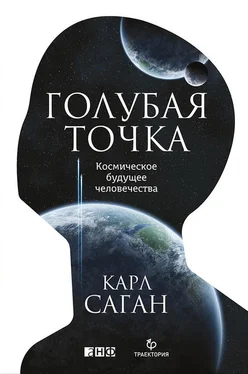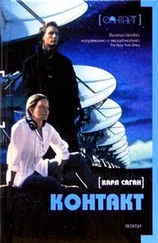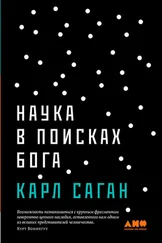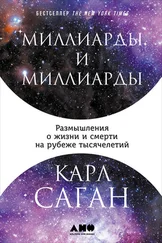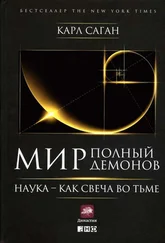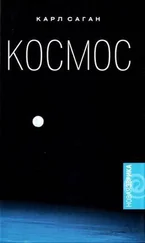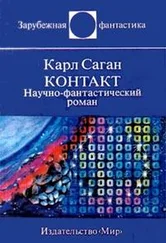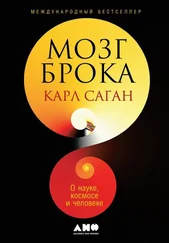ГЛАВА 5. СУЩЕСТВУЕТ ЛИ РАЗУМНАЯ ЖИЗНЬ НА ЗЕМЛЕ?
Carl Sagan, W. R. Thompson, Robert Carlsson, Donald Gurnett, and Charles Hord, «A Search for Life on Earth from the Galileo Spacecraft,» Nature, vol. 365 (1993), pp. 715–721.
ГЛАВА 7. СРЕДИ СПУТНИКОВ САТУРНА
Jonathan Lunine, «Does Titan Have Oceans?» American Scientist, vol. 82 (1994), pp. 134–144.
Carl Sagan, W. Reid Thompson, and Bishun N. Khare, «Titan: A Laboratory for Prebiological Organic Chemistry,» Accounts of Chemical Research, vol. 25 (1992), pp. 286–292.
J. William Schopf, Major Events in the History of Life (Boston: Jones and Bartlett, 1992).
ГЛАВА 8. ПЕРВАЯ НОВАЯ ПЛАНЕТА
Bernard Cohen, «G. D. Cassini and the Number of the Planets,» in Nature, Experiment and the Sciences, Trevor Levere and W. R. Shea, editors (Dordrecht: Kluwer, 1990).
ГЛАВА 9. АМЕРИКАНСКИЙ ЗОНД У КРАЯ СОЛНЕЧНОЙ СИСТЕМЫ
«Шорохи Земли», CD-диск записей «Вояджера», вводное слово Карла Сагана и Энн Друян (Лос-Анджелес: Warner New Media, 1992), WNM 14022.
Alexander Wolszczan, «Confirmation of Earth-Mass Planets Orbiting the Millisecond Pulsar PSR B1257+12,» Science, vol. 264 (1994), pp. 538–542.
ГЛАВА 12. КОГДА ЗЕМЛЯ ГОРИТ ПОД НОГАМИ
Peter Cattermole, Venus: The Geological Survey (Baltimore: Johns Hopkins University Press, 1994).
Peter Francis, Volcanoes: A Planetary Perspective (Oxford: Oxford University Press, 1993).
ГЛАВА 13. ДАР АПОЛЛОНА
Andrew Chaikin, A Man on the Moon (New York: Viking, 1994).
Michael Collins, Liftoff (New York: Grove Press, 1988).
Daniel Deudney, «Forging Missiles into Spaceships,» World Policy Journal, vol. 2, no. 2 (Spring 1985), pp. 271–303.
Harry Hurt, For All Mankind (New York: Atlantic Monthly Press, 1988).
Richard S. Lewis, The Voyages of Apollo: The Exploration of the Moon (New York: Quadrangle, 1974).
Walter A. McDougall, The Heavens and the Earth: A Political History of the Space Age (New York: Basic Books, 1985).
Alan Shepherd, Deke Slayton et al., Moonshot (Atlanta: Hyperion, 1994).
Don E. Wilhelms, To a Rocky Moon: A Geologist's History or Lunar Exploration (Tucson: University of Arizona Press, 1993).
ГЛАВА 14. ИССЛЕДОВАТЬ ДРУГИЕ МИРЫ И ЗАЩИЩАТЬ ЭТОТ
Kevin W. Kelley, editor, The Home Planet (Reading, MA: AddisonWesley, 1988).
Carl Sagan and Richard Turco, A Path Where No Man Thought: Nuclear Winter and the End of the Arms Race (New York: Random House, 1990).
Richard Turco, Earth Under Siege: Air Pollution and Global Change (New York: Oxford University Press, в печати).
ГЛАВА 15. ПУТЬ, ВЕДУЩИЙ В МИР ЧУДЕС, ОТКРЫТ
Victor R. Baker, The Channels of Mars (Austin: University of Texas Press, 1982).
Michael H. Carr, The Surface of Mars (New Haven: Yale University Press, 1981).
H. H. Kieffer, B. M. Jakosky, C. W. Snyder, and M. S. Matthews, editors, Mars (Tucson: University of Arizona Press, 1992).
John Noble Wilford, Mars Beckons: The Mysteries, the Challenges, the Expectations of Our Next Great Adventure in Space (New York: Knopf, 1990).
ГЛАВА 18. БОЛОТА КАМАРИНЫ
Clark R. Chapman and David Morrison, «Impacts on the Earth by Asteroids and Comets: Assessing the Hazard,» Nature, vol. 367 (1994), pp. 3340.
A. W. Harris, G. Canavan, C. Sagan, and S. J. Ostro, «The Deflection Dilemma: Use vs. Misuse of Technologies for Avoiding Interplanetary Collision Hazards,» in Hazards Due to Asteroids and Comets, T. Gehrels. editor (Tucson: University of Arizona Press, 1994).
John S. Lewis and Ruth A. Lewis, Space Resources: Breaking the Bonds of Earth (New York: Columbia University Press, 1987).
C. Sagan and S. J. Ostro, «Long-Range Consequences of Interplanetary Collision Hazards,» Issues in Science and Technology (Summer 1994), pp. 67–72.
ГЛАВА 19. ПРЕОБРАЗОВАНИЕ ПЛАНЕТ
J. D. Bernal, The World, the Flesh, and the Devil (Bloomington, IN: Indiana University Press, 1969; first edition, 1929).
James B. Pollack and Carl Sagan, «Planetary Engineering,» in J. Lewis and M. Matthews, editors, Near-Earth Resources (Tucson: University of Arizona Press, 1992).
ГЛАВА 20. ТЕМНОТА
Frank Drake and Dava Sobel, Is Anyone Out There? (New York: Delacorte, 1992).
Paul Horowitz and Carl Sagan, «Project META: A Five-Year All-Sky Narrowband Radio Search for Extraterrestrial Intelligence,» Astrophysical Journal, vol. 415 (1992), pp. 218–235.
Thomas R. McDonough, The Search for Extraterrestrial Intelligence (New York: John Wiley and Sons, 1987).
Саган К. Контакт. – М.: Мир, 1985.
ГЛАВА 21. К НЕБУ!
J. Richard Gott III, «Implications of the Copernican Principle for Our Future Prospects,» Nature, vol. 263 (1993), pp. 315–319.
ГЛАВА 22. КРАДУЧИСЬ ПО МЛЕЧНОМУ ПУТИ
I. A. Crawford, «Interstellar Travel: A Review for Astronomers,» Quarterly Journal of the Royal Astronomical Society, vol. 31 (1990), p. 377.
I. A. Crawford, «Space, World Government, and `The End of History'» Journal of the British Interplanetary Society, vol. 46 (1993), pp. 415–420.
Freeman J. Dyson, The World, the Flesh, and the Devil (London: Birkbeck College, 1972).
Ben R. Finney and Eric M. Jones, editors, Interstellar Migration and the Human Experience (Berkeley: University of California Press, 1985).
Фукуяма Ф. Конец истории и последний человек. – М.: Ермак; АСТ, 2005.
Charles Lindholm, Charisma (Oxford: Blackwell, 1990). В данной книге цитируется отрывок о необходимости телоса .
Eugene F. Mallove and Gregory L. Matloff, The Starflight Handbook (New York: John Wiley and Sons, 1989).
Carl Sagan and Ann Druyan, Comet (New York: Random House, 1985).
Мелвилл Г. Моби Дик, или Белый Кит. – М.: Эксмо, 2014.
«Тому же, что рассказывают, будто существуют антиподы, – писал Св. Августин в V в., – т. е. будто на противоположной стороне Земли, где солнце восходит в ту пору, когда у нас заходит, люди ходят в противоположном нашим ногам направлении, нет никакого основания верить». Даже если там есть какая-либо суша, а не только океан, «поскольку первых людей было всего двое, и немыслимо, чтобы столь отдаленные области также были заселены потомками Адама». – Прим. авт.
Продюсер и сценаристка, третья (последняя) жена Карла Сагана. – Прим. ред.
Знаменитая книга Коперника была впервые опубликована с предисловием теолога Андреаса Озиандера, добавленным к ней без ведома умиравшего автора. Знаменитая попытка Озиандера примирить религию и астрономию оканчивалась следующими словами: «Не следует ожидать от астрономии ни малейшей определенности, поскольку астрономия ни о чем не может свидетельствовать наверняка, иначе если кто-либо воспримет как истину такой конструкт, который создавался в совершенно иных целях, то ему придется оставить эту дисциплину еще большим глупцом, чем при знакомстве с ней». Любая определенность возможна лишь в религии. – Прим. авт.
Читать дальше
Конец ознакомительного отрывка
Купить книгу
